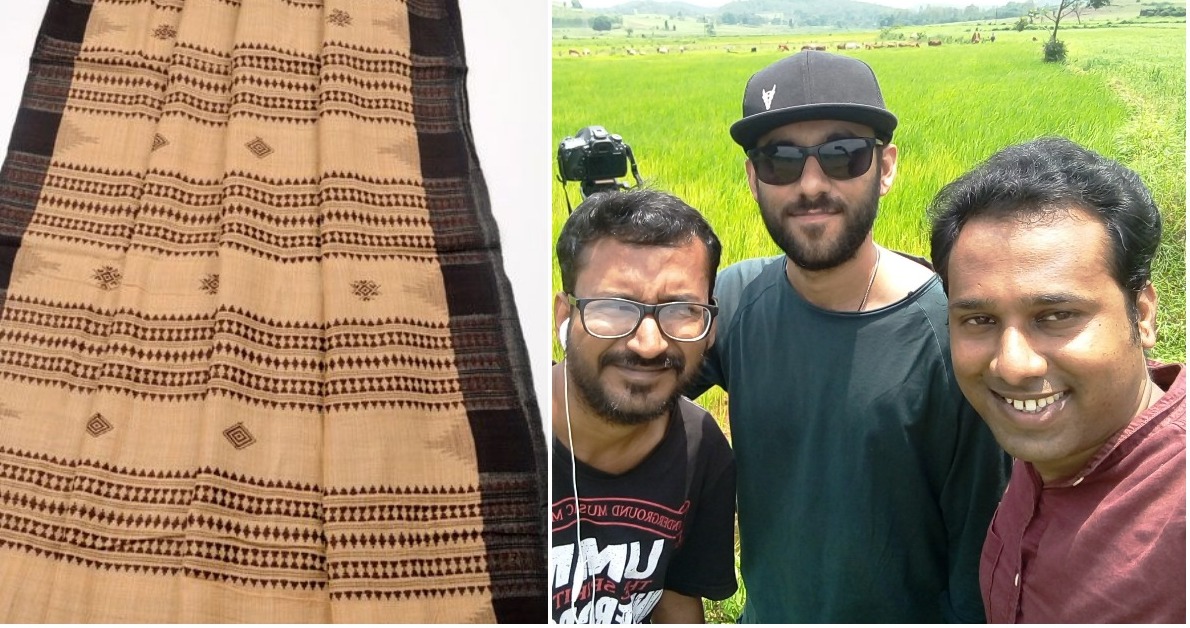I aspire to take Kotpad story to global audience: Odisha filmmaker
Bhubaneswar: Rough and coarse to touch yet soft on the skin, Kotpad weaves of Odisha’s Koraput inspire awe for its simplicity. Over the years, this exquisite organic-dyed textile greased the wheels of the local economy.
Notwithstanding the Geographical Indication (GI) tag in 2005 and attempts by designers of repute to weave it into their couture, the struggle of the local weavers to keep the tradition alive continues.

Filmmaker Biswanath Rath has captured the essence and beauty of this textile, along with the process and the weavers’ fight for survival in a documentary, ‘Kotpad Weaving: The Story of a Race Against Time’, which was recently telecast on DD National.
Odisha Sun Times caught up with filmmaker, currently based out of Chennai, to know what drew him to this traditional weave. Excerpts:
What was the idea behind shooting this documentary?
Although Kotpad, a tribal textile tradition, has not received as much visibility as other Indian handlooms, it has its own set of uniqueness which has attracted global attention. To start with, Kotpad fabric uses natural dyes. The colours are derived from organic materials like root of Indian Madder Tree (Aal), cow dung, wood ash, castor oil, something which is unheard of even in global textile/fashion industry. Antique pit looms are used to produce awe-inspiring patterns in fabrics which are adorned with nature-inspired tribal motifs. This ageless art and tradition of handloom has since centuries stood the test of time.

If the rising price and scarcity of raw materials, besides increasing popularity of synthetic fabrics, the alarmingly decline in the number of Kotpad weavers and dyers, are anything to go by, the doomsday is nearing.
Jeypore is my hometown, which is just 50 km from Kotpad. Although a great admirer of tribal culture, I got to know about Kotpad handloom only in October 2016. For me, it was an inspiring subject and I felt the urge to create awareness about this near-extinct tradition. This documentary is my humble attempt at identifying the issues and possible solutions for reviving this timeless craft.
What type of research went into its making?
As an outsider to textile/fashion industry, the research for this documentary was quite challenging yet exciting. As the first step, I went through all materials available online. Besides an overall understanding of Kotpad weaving, I could identify important aspects and persons, who have to be part of the documentary.

In the last week of June, I travelled to Kotpad and met Kapileswar Mohonto, a national awardee and former president of Weavers Cooperative Society, and his family. During those four days, they explained the process, its uniqueness, various issues and market condition. I met some experienced dyers and weavers and discussed with them the past, present and future of Kotpad handloom.
Ashutosh Mahanty, Assistant Director Textiles (Koraput), shared valuable information and insights like Odisha government’s plans and initiatives for reviving and promoting this handloom.

Inputs from Anupriya Mridha, a NIFT graduate and founder of textile brand ‘Vani Vrtti’, Sudha Dhinga, a professor at NIFT who had done her PhD on Kotpad dyeing/weaving, and Lipsa Hembram, a fashion designer who owns the brand ‘Galang Gabaan’, also helped me in preparing the final script.
Where was the documentary shot?
The documentary was shot in Kotpad and nearby villages (Bansouli and Dangriguda), Nabarangpur (Sana Masi Gaon, Bada Masi Gaon, Bhaatigaon), Koraput, Damanjodi, Sunabeda, Tribal villages: Bandiguda (Bonda Ghati) and Talur, besides Bhubaneswar, Delhi and Kolkata.

It was shot over a span of 35 days, 32 days for the main shoot, 3 days for drone/helicam.
What do you expect to achieve through this documentary?
The documentary has been made for an international audience and I hope like all our previous works, this too will reach international festivals, fora and platforms and will bring much-needed attention to Kotpad handloom at the global level.

Following its world TV premiere on DD National (DD1), a few designers have evinced interest in the fabric. Even government officials are keen to show the documentary to various stakeholders.
I hope all these interests will lead to debates and discussions at various levels on possible ways and means of addressing the current issues and saving the craft from extinction.


Comments are closed.